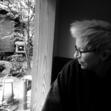Elizabeth Ellsworth's Blog
February 11, 2024
Solid, Broken, Changing makes #1 x3 on Amazon’s free Kindle best seller lists, and Top 100 on paid

Solid, Broken, Changing is officially a best “seller” on three genre lists in Kindle’s free store. With over free 1,900 downloads last week, it listed as #1 in Teen and Young Adult Sci-Fi Action and Adventure eBooks, #1 in Teen and Young Adult Coming of Age Fiction, and #1 in Children’s Action and Adventure Sci-Fi. That put it in the top 100 free eBooks on Kindle across ALL categories–climbing to #76.
And today, it made the Top 100 best seller list for PAID Kindle eBooks in all three categories again!
Best Sellers Rank: #87 in Teen & Young Adult Sci-Fi Action & Adventure eBooks#89 in Teen & Young Adult Apocalyptic & Post-Apocalyptic eBooks#92 in Teen & Young Adult Coming of Age Fiction eBooks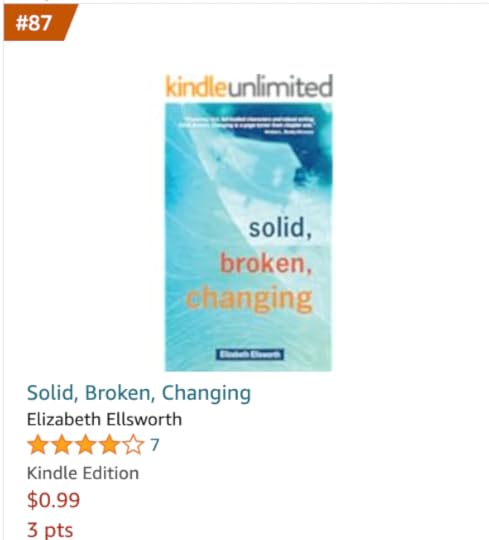
Let’s hear it for all those downloaders who brought Kally and Stuart out of their 2020 lockdown and into 2024!
Next step? Get Kally and Stuart’s story into the hands of readers by securing reviews from book bloggers and Kindle readers in coming days.
Meanwhile, Solid, Broken, Changing is available for $.99 download on Kindle, and free to KindleUnlimited readers.
Cheers!
February 2, 2024
wayfindrpunk—hopepunk’s reality check
 wayfindr, as in: navigator of planetary-scale waves of change, on the fly
wayfindr, as in: navigator of planetary-scale waves of change, on the fly +
punk, as in: it’s a messy churn of co-existence all the way down
In 2017, Author Alexandra Rowland coined the term “hopepunk.” She used it to describe stories and states of mind that are, as she put it, “the opposite of grimdark.” She offered hopepunk as an antidote to the multiplying bookshelves filled with dystopian, amoral, and violent stories that featured myopic, flailing characters.
“Hopepunk says that kindness and softness doesn’t equal weakness, and that in this world of brutal cynicism and nihilism, being kind is a political act. An act of rebellion.” Tumblr
As a scifi genre, hopepunk is meaningful and even be motivating—as far as it goes. But I’m not sure it goes far enough. Hopepunk isn’t quite up to the realities of the new futures pouring in right now:
In 2024, what readers are being forced to imagine as their futures, much less their actual present, spills beyond the limits of hopepunk.Hopepunk stories may lift readers out of individual and collective states of grimdark. But hope is a culture-charged human emotion. It can be, and often is, sentimentalized, monetized, co-opted by religious dogmas and political partisans.Rowland’s call for stories of resistance, rebellion, and hope makes sense in worlds that run on opposites: hope vs. despair, dark vs. light, strong vs. weak, good vs. evil, alive vs. dead, outsider vs. insider, me vs. you. But we don’t live in a world of opposites. The pathways of existence in our universe intwine all things: human+beyond human, sentient+beyond sentient, earth+cosmos, through all space-time.What happens when hopepunk isn’t grimdark enough to feel,
you know, “real” enough to be good science fiction?
Wayfindrpunk happens.
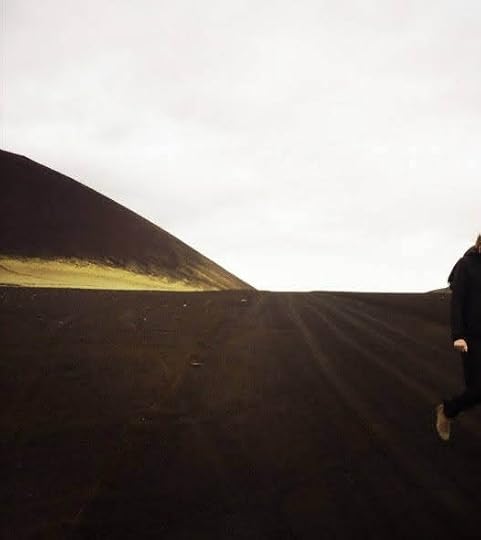 The wayfindr in wayfindrpunk says: the pathways of being and lasting in the weave of the cosmos are always changing. All things and all life forms never stop coming together, falling apart, and recombining again, differently.The punk in wayfindrpunk says: The universe is an evolving mesh-net of messy co-existers. Messy, because when one thing falls apart and then recombines into something else—it messes with other things. Our cosmos of exquisite co-existence doesn’t play favorites. Sometimes a comet hits. Or an earthquake. Or a virus. Or a species with the capacity to be self-centered and domineering beyond its own good-enough existence.
The wayfindr in wayfindrpunk says: the pathways of being and lasting in the weave of the cosmos are always changing. All things and all life forms never stop coming together, falling apart, and recombining again, differently.The punk in wayfindrpunk says: The universe is an evolving mesh-net of messy co-existers. Messy, because when one thing falls apart and then recombines into something else—it messes with other things. Our cosmos of exquisite co-existence doesn’t play favorites. Sometimes a comet hits. Or an earthquake. Or a virus. Or a species with the capacity to be self-centered and domineering beyond its own good-enough existence.wayfindrpunk characters understand that some things, human and beyond human, get changed forever. In Solid, Broken, Changing, sometimes Kally and Stuart must carry on by navigating around what’s truly broken and no longer viable. Other times, they’re able to flow on only by plunging into torrents of grief, fear, and failure—because these are pathways of co-existence too—just as real and meaningful as are the welcome eddies of fair weather.
Uncertain and imperfect, wafindrpunk characters tap in, observe, then kluge together just enough inkling about the drift of things to be able to carry on. Carefully. Fiercely. Adjusting over and over as things, and they themselves, continue to change.
They do this not because their go-to emotion is hope. But because it’s intrepid curiosity.
Their unstoppable curiosity is also their superpower. Kally and Stuart know that the planet’s forces of careening change could very well out-scale their efforts any moment. But nothing can out-scale their curiosity.
Their survival is the survival of the fitters. Their superpower is their unbreakable eagerness to master, humbly, ways of being and lasting as co-existers. As Kally and Stuart surf increasingly choppy pathways of co-existence, they grow into impressive—if not magical—re-fitters, re-purposers, redirectors, repairers, re-inventors.
I wrote Solid, Broken, Changing because I thought scifi needed wayfinderpunk characters like Kally and Stuart. Characters who:
come to recognize when incredible beauty is also the mess; absurdity is also the logic; yielding is the strength; laughter is tears and tears, laughter,study upending new circumstances without judgment, hope, hubris, dogma, or greed,don’t try to grasp it all, but focus on reading the drift of things right at their fingertips,foster the flourishing of co-existence—if only for now, if only where they happen to be, and without savior or hero complexes.In the award-winning anime film, Weathering with You, the heroine Hina has been trying to hold back climate change at the expense of her own life. Her friend, Hodaka tells her: “You don’t have to be sunshine girl anymore. Let the world be crazy.” Hodaka goes on to tell himself: “I choose this world. I choose to live in it.”
The world he chooses is a crazy one, not just because of climate change, but because the ways of the cosmos are beyond human reason. “It always has been [crazy] and always will be,” another character tells him. Hodaka and Hina know there’s no fixing that. There’s no escaping it, either. And so, they choose to go deeper into it. They become ever more creative participants in all of the forces that compose their world—the solid, the broken, and the changing.
In the future that is now, Kally and Stuart, Hodaka and Hina, are joining forces in some alter-universe. They’re trading skills as human antennae, fitters, co-existers, shape-shifters. They are wayfindrpunks, creatively navigating what makes their lives possible in the first place: waves of crazy change across all time and space.
More on wayfindrpunk + some examples
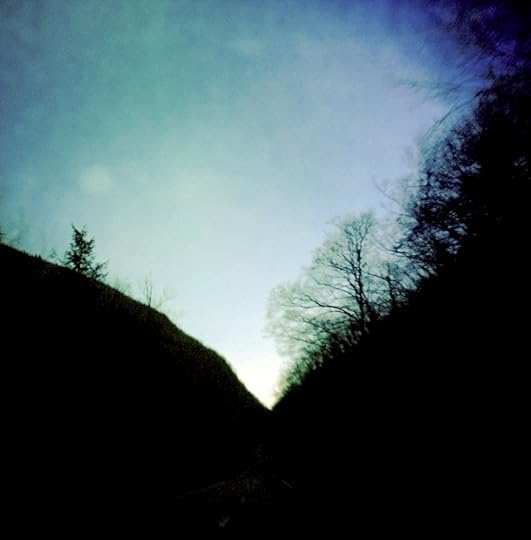 Examples of wayfindrpunk
Examples of wayfindrpunkScifi: All of Becky Chambers‘ books.
I can see why people read Becky Chambers’ work as hopepunk. But I think that sells her accomplishments short.
Her wayfarers have leveled up from hopepunk to wayfindrpunk. They take for granted that the universe is genuinely queer. They greet mind-bending difference and danger-filled surprises with unflappable inquisitiveness. They understand that co-existence means messing things up no matter what. So, when they find themselves within alien environments, they make every effort to mess things up as little as possible. They learn painful lessons, reshape themselves and their actions in response, and continue on as radical co-existers. Making it up as they go along and not imposing what they thought they knew is their way, their superpower. They are indeed “fortunately taught” by everything they encounter, including the limitations of their own beliefs and species habits. They aren’t only learners, they’re passionate learners. All of which makes them wayfindrs through and through.
Fiction:
Orbital by Samantha Harvey. It immerses readers and characters in sensations of the unearthly co-existence Earth enjoys+suffers with the cosmos, and that we humans enjoy+suffer with each other and with Earth.
Film:
Perfect Days, Wim Wenders’ collaboration with Takuma Takasaki and Koji Yashuko. Hirayama, a cleaner of public toilets in Tokyo, is an exemplary wayfindrpunk character. He navigates nothing less than the churning maw of change on Planet Earth with grace and acceptance. He participates in the cosmos at the scale of small, ephemeral acts of awareness, creativity, and kindness in everyday human+beyond human life.
and
Beasts of the Southern Wild, Benh Zeitlin.
“In this movie, story is less important than sheer being, the moment-by-moment activity of life, which, in a metaphysical coup, becomes part of the endless flux of existence.”—David Denby, The New Yorker
Anime:
Weathering With You, by Makoto Shinkai. A YA anime about climate change. At a high cost to themselves and others, this anime’s wayfindrpunk characters refuse to resist the onslaught of climate change because it means maintaining an artificially “fixed” world. Instead, they allow the imperfect, “good and bad” world of global change to arrive into the present because—that’s the real world.
“I want to make a film where a boy and girl actively choose [to live in a crazy] world. Let’s depict a couple who will head towards a place of no return, brightly and positively. And if the audience share their choice with surprise and sympathy, we will be able to find a meaning in making this unrighteous story into a film of our times.”—collider.com
Photography:
An-My Lê’s photographs: depictions of messy and messed up co-existence, all the way down.
“…every detail feels like it is a subject, every detail becomes significant.”
“The accumulation of details in the landscape, and the relationship between seemingly disparate kinds of landscapes, become the ground on which Lê explores the layered construction of history. “I want it to hold your attention in every little corner,” she once said. “Then when you stand back, I want it to transcend to something greater.” Museum of Modern Art, New York
Real life:
Barbara McClintock’s wayfindrpunk career as a Nobel Prize scientist. She won the Nobel Prize because she had a mysterious, inexplicable “feeling for the organism” and interconnections. She felt, and then proved, the reality of “mobile genetic elements.” She had a wayfindrpunk’s sixth sense of the deep, intwined secrets of how things go.
Sport:
surfing. Maya Gabeira. nuff said.
Work:
Wayfindrpunk work traces and shores up pathways of co-existence. It practices the survival of the fitter, the re-rigger—as in, kludging together what we’ve got on hand into the best possible fit with the way of things—right here and now. That’s a good day’s work, in all senses of the word.
John Powell’s marvelous study of vast vehicle-repair shops in Ghana, ‘The Survival of the Fitter: Lives of Some African Engineers‘ (1995), describes a modern world in which vehicles imported from the developed world initially decay, and then something changes: “As time goes by and the vehicle is reworked in the local system, it reaches a state of apparent equilibrium in which it seems to be maintained indefinitely. . . . It is a condition of maintenance by constant repair.” Much of the world’s mechanical ingenuity is devoted to creating robust, reliable, and highly adapted “creole” technologies, an ingenuity that is largely invisible to us only because we happen to live in a low-maintenance, high-throwaway regime.—Steven Shapin, The New Yorker
Art+Architecture:
The Center for Land Use Interpretation’s: Clean Livin’
Ancient human wisdom:
I Ching

More on wayfindrpunk:wayfindr, as in: navigator of planetary-scale waves of change, on the fly
“On the days of their demise, reinventing themselves with the dedication of a bird sitting on eggs, things shed skins. That’s how it is…what could there be to regret? …things move on by shedding skins. And so, setting forth will bring good fortune indeed. How could you ever go astray?”
—Hexagram 49 “SHEDDING SKIN” from I Ching: The Book of Change, translation by David Hinton

+
punk, as in: it’s a churn of co-existence all the way down, and that’s messy (and messed up)
As a scifi genre, hopepunk is meaningful and even motivating as far as it goes. But I’m not sure it goes far enough. What YA readers must imagine in 2024 as they consider their futures, much less their actual present, spills beyond the limits of hopepunk.
Hopepunk stories may lift readers out of individual and collective states of grimdark. But hope is a culture-charged human emotion. It can be sentimentalized, monetized, co-opted by religious dogmas and political partisans. In these grim social-political-environmental times, hope is branded, packaged and sold as a lifestyle choice—a form of resistant, “aggressive self-care.”
In Solid, Broken, Changing, Kally’s and Stuart’s lives teeter on the edge of a massive, planetary sea change. While they are far from feeling or acting hopeless in the face of it, there’s no doubt that their daily lives are fast sliding out of the realm of hopepunk and into—what? What happens when hopepunk isn’t grimdark enough to feel, you know, “real” enough to be good science fiction? When the emotion of “hope” doesn’t quite cut it? What do scifi readers need and want as their home planet and everything on it, including their own life plans, become unrecognizable?
Hopepunk isn’t quite up to the realities of the new futures arriving right now. Scifi needs a -punk whose characters are up to fostering what’s still solid, repairing or refitting what’s broken, and dead-reckoning unmapped shifting ground—all at the same time.
Wayfindrpunk is hopepunk’s reality check.
The wayfindr in wayfindrpunk says: the pathways of being and lasting in the weave of the cosmos are always changing. All things and all life forms never stop coming together, falling apart, and then reconfiguring again, differently. Wayfindrpunk dares to imagine belonging to such a cosmos—our own.
The punk in wayfindrpunk says: The universe is an evolving mesh-net of messy (and messed up) co-existers. Messy, because when one thing falls apart and then reforms into something else—it messes with other things. Messed up, because our cosmos of co-existence doesn’t play favorites. So sometimes a comet hits. Or an earthquake. Or a virus. Or a species with the capacity to be self-centered and domineering beyond its own good-enough existence.
It might be a messed up churn of co-existence—but it’s never personal. Then again, it’s not impersonal, either. It’s beyond personal and impersonal. Unlike in hopepunk, in wayfindrpunk, the way things go doesn’t hinge on human emotions, will, or values. It especially doesn’t hinge on the individual acts of superheroes. Me vs. you, us vs. them acts of resistance and domination simply don’t compute.
Shifting pathways of co-existence operate in ways that are much more complicated, subtle, mysterious, and creative than that.
Author Alexandra Rowland coined the term “hopepunk” in 2017. She used it to describe stories and states of mind that are, as she put it, “the opposite of grimdark.” She offered hopepunk as an antidote to the shelves and shelves of dystopian, amoral, and violent stories that feature myopic, flailing characters.
“Hopepunk says that kindness and softness doesn’t equal weakness, and that in this world of brutal cynicism and nihilism, being kind is a political act. An act of rebellion.” Tumblr
Rowland’s call for stories of resistance, rebellion, and hope makes sense in a world that runs on opposites: hope vs. despair, dark vs. light, strong vs. weak, good vs. evil, alive vs. dead, outsider vs. insider, me vs. you.
But we don’t live in a world of opposites. Our world is literally made of interrelationships, all the way down. Interrelationship is a material reality, if not the material reality. The pathways of being and lasting in our universe intwine all things: human+beyond human, sentient+beyond sentient, earth+cosmos, through all space-time.
The vast and intimate forces of co-existence might not be personal, but that doesn’t mean characters in wayfindrpunk stories have no emotions.
Planet Earth’s time, space, and forces of change out-scale Kally and Stuart. They feel it happening all around them. But their go-to emotion isn’t hope. Their go-to emotion is intrepid curiosity.
Kally experiences floods of wonder at the change she senses coming. Even if that wonder rides in on waves of unease. She and Stuart are buoyed by a passion for figuring out the startling new conditions of life that are emerging on their planet. When they invent temporary, precarious ways to move in tandem with them, they are re-enlivened. They become aware of deep, even mysterious sensations of belonging to these patterns. It encourages and spurs them on.
Kally and Stuart might be seriously out-scaled by planet-wide change. But that doesn’t mean they don’t have superpowers. wayfindrpunk characters meet reality with curiosity: what is the drift of this new wrinkle in the way of things? If I surf it, where might it take me? If we need to avoid it or sit it out, how do we move in relation to it?
Uncertain and imperfect, wafindrpunk characters kluge together just enough inkling about the drift of things to be able to carry on. They tap in. They carry on carefully.
Kally is seriously tapped into her changing world. She see what’s happening in terms of “relationships” and “dynamic patterns,” not individual things. As she and Stuart surf increasingly choppy pathways of co-existence, they grow into impressive—if not magical—re-fitters, re-purposers, redirectors, repairers, re-inventors. Their survival is the survival of the fitters. Their superpower is their unbreakable eagerness to master, humbly, ways of being and lasting as co-existers.
And yet, they also understand that some messed up things will never be un-messed up.
As they feel for ways to be and last within planet-scale change and human messed-up-ness, Kally and Stuart cultivate alter-skills and wayfindrpunk mindsets. Sometimes, they carry on by navigating around what’s truly broken and no longer viable. Sometimes, they flow on by plunging into torrents of grief, fear, and failure—because these are pathways of co-existence too—just as real and meaningful as are the welcome eddies of fair weather.
They recognize incredible beauty that’s also the mess, absurdity that’s also the logic, yielding that is strength, laughter that is tears and tears that are laughter. They stand in the midst of surprising new circumstances without judgment, hope, hubris, dogma, or greed. Never grasping it all fully, they focus instead on reading the drift of things at their fingertips. Without savior or hero complexes, they foster the flourishing of co-existence—if only for now, if only where they happen to be.
In the award-winning anime film, Weathering with You, Hodaka tells the world-saving heroine, Hina: “You don’t have to be sunshine girl anymore. Let the world be crazy.” Hodaka goes on to tell himself: “I choose this world. I choose to live in it.”
The world he chooses is a crazily messed up one. “It always has been [crazy] and always will be,” another character tells him. “Crazy” not just because of climate change, but because forces of the cosmos themselves are beyond human reason. Hodaka and Hina know there’s no fixing that. There’s no escaping it, either. Instead, they choose to go deeper into it, becoming ever more a part of it—the solid, the broken, and the changing.
In the future that is now, Hodaka, Hina, Kally and Stuart are joining forces in some alter-universe. They’re trading skills as human antennae, fitters, co-existers, shape-shifters. They are wayfindrpunks, creatively navigating what makes life possible in the first place: waves of crazy change across all time and space.
Then … I read Becky Chambers.
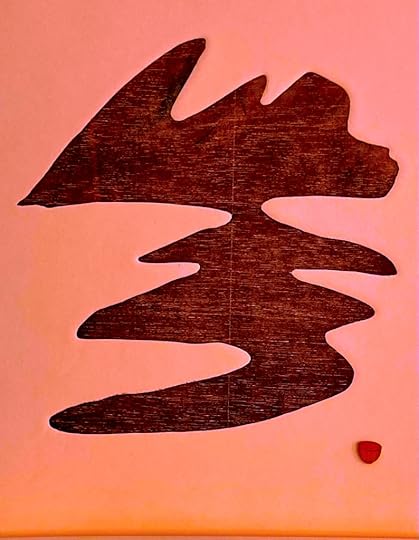

Summer, 2023. Nearly 4 years after the global pandemic began. Solid, Broken, Changing‘s launch was still on hold. Then I read Becky Chambers’ A Psalm for the Wild Built. And every other book she wrote.
Becky’s style of sci fi fantasy was a revelation to me. To others as well it seems. Fantasy writer Alexandra Roland coined a term to describe such storytelling: “hopepunk.”
Hopepunk says that genuinely and sincerely caring about something, anything, requires bravery and strength. Hopepunk isn’t ever about submission or acceptance: It’s about standing up and fighting for what you believe in. It’s about standing up for other people. It’s about DEMANDING a better, kinder world, and truly believing that we can get there if we care about each other as hard as we possibly can, with every drop of power in our little hearts. —Alexandra Roland ariaste
I wrote Solid, Broken, Changing because I needed its story for myself. Given all I was learning about the Anthropocene, I needed stories that celebrated the brave strength and risk it takes to creatively respond to massive change, radical difference, and disturbing new material realities of life on Earth. I wanted stories about characters who embrace learning when faced with difference, and who find new friends when sheltering with strangers.
While writing Solid, Broken, Changing, I worried that there wouldn’t be an audience for it. Its story didn’t seem. . .brutal enough. At that time, I didn’t know hopepunk was a thing. Who knew that speculative, futurist sci fi could feel both gentle and fierce, like Chambers’ stories felt? Who knew that sci fi fantasy could feature characters like Becky’s: flawed yet compassionate beings who unflinchingly gave kind regard to others—no matter how queer or “different”? Who knew that such themes and sentiments won major sci fi awards?!
Hopepunk and Becky Chambers’ books were, yup, revelations. They were balm. Salve. And butt-kicking enlivening. They lifted me out of pandemic-induced grimdark. And I decided to give Solid, Broken, Changing a proper launch.
But not as hopepunk. As wayfindrpunk!
February 1, 2024
Now—where were we … ?
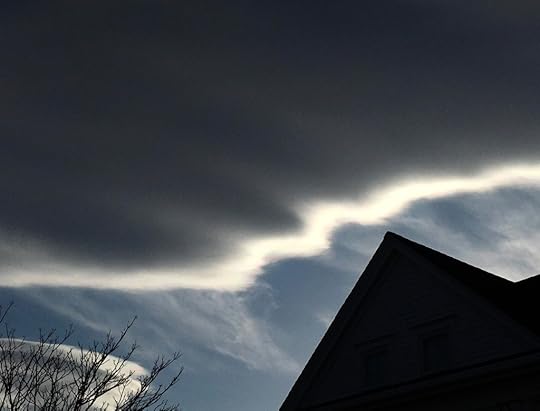
December, 2019. I pressed “publish” on Solid, Broken, Changing. And…yup. We all know what happened next.
All launch efforts were scrubbed, replaced by efforts to shore up what was solid in life, repair or let go of what was broken, and move as gracefully in accord with what was seriously changing.
I had thought that Kally, hero of Solid, Broken, Changing, was living in the near future. Turns out, just like Kally, I hadn’t imagined the tipping points of planetary change would let go so soon or so fast.
Fast forward. Today, year 4ish, AEC (After Everything Changed).
Tipping points have ramified these past few years. Waves of environmental and social change rock Planet Earth and her life forms. Kally’s story grows ever more resonant.
Let’s give Solid, Broken, Changing—and Kally and Stuart—a proper launch.
Let’s not leave them stuck in 2019-20.
No one should be stuck there.
Here in 2024, Solid, Broken, Changing gives readers a much needed twist on hopepunk* (see below). It’s a YA scifi novel that embraces the punk but dares to question sentimentalized, human-centric aspects of “hope.” It explores human and beyond-human realities of radical co-existence. It’s a story propelled by characters who perform acts of creative dead reckoning within the maw of continuous, deep change.
It’s time to relaunch Kally and Stuart’s story!
Next week, Solid, Broken, Changing relaunches as a work of YA scifi wayfindrpunk.
*“Hopepunk” is a term coined in a 2017 Tumblr post by author Alexandra Rowland (author of A Conspiracy of Truths and A Choir of Lies). She described it as the opposite of “grimdark”— it’s the defiant optimism to grimdark’s overwhelming pessimism. In Rowland’s 2019 article, she wrote: “There are no heroes and no villains. There are just people. That’s hopepunk: Whether the glass is half full or half empty, what matters is that there’s water in that glass. And that’s something worth defending.” It is the genre of radical kindness.--Ash, Literary Quicksand
January 11, 2022
Solid, Broken, Changing reviewed!
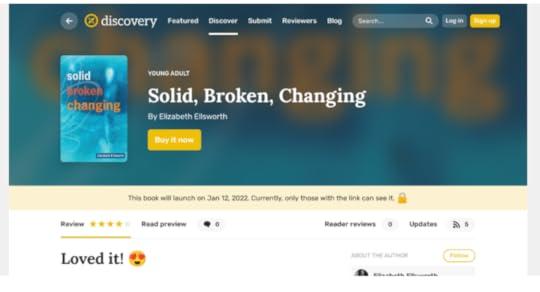 Loved it!
Loved it! 
“Rich and robust, this expertly crafted sci fi/dystopian novel will have you turning pages until the very end.“
SYNOPSISKally, aka the human antenna, sensed it coming. Planet Earth was shifting under her feet. So was her family. But she never imagined that their tipping points would let go this soon—and this fast. Now, Kally and her father are sheltering in place with strangers on an isolated island in the Gulf of Maine. As each world-busting wave of change rocks their tiny enclave, she fears she will never have the chance to realize her dreams. In her urgent search for bearings, Kally discovers a surprising ally in Stuart, a champion forerunner who believes he can vault and pivot beyond anything that gets in his way. But, as they pool their skills, they soon realize: no map exists for what they and the earth are becoming. Setting out to find her way in the heaving future, Kally dares to steer by the only pole star she has left—her intuition-fueled creativity.
“Trust nothing you thought you knew. Expect only the unexpected.”
That adage ably sums up this wonderfully rich and inventive Young Adult novel.
It’s summer off the coast of Maine. Kally and her father David, an emergency management professional, are sailing aboard Home, their stalwart vessel of many memoires. The weather forecast says “perfect.” An artist, Kally is trying to figure out her figure and is about to begin her college tour. Dad is about to tell Kally Something Important – Something Big – when Home is hit by a titanic rogue wave and capsizes. Kally and her father are rescued by the Hart family. They’re enjoying a vacation on a nearby lighthouse island before plunging into the fall season.
It’s not long before Kally starts feeling she’s in a “summer Disney movie going very, very wrong.” Did a freak storm bring Kally and her dad to the island – or is something else going on? What is making that “sound-feeling”? Are Kally’s drawings “abstract art” or something else?
“All the falling apart of what used to be real? All the erupting of new facts of existence that never before existed on Earth? It all starts now.”
Then the families are hit by three whacked out weather seasons in one night. Then a swarm of “ghost birds.” St. Elmo’s fire. A Home-wrecking downburst. A ferocious whirlwind that knocks out all power and satellite service on the island and thrashes the entire East Coast. Enter “family-busting secrets.” A missing mother – Kally’s. Foothold and handholds. Freezing-tagging. A bellowing foghorn. Wayfinding. A “human antenna.” And Stuart Hart, a champion freerunner and surprising ally who dreams of becoming a NASA flight controller.
What in the world is going on?
I wasn’t quite sure what to make of this book at first. Turning pages, however, I discovered a highly engaging blend of dystopian fiction, futuristic sci fi and “family forever.”
Featuring rich, full-bodied characters and robust writing, Solid, Broken, Changing is a page turner from chapter one. (That’s a really unfortunate title. A story as solid as this one deserves something better.) Nimble, agile, and briskly paced, Solid is an expertly crafted story that’s highly readable. It’s an exceptional achievement, especially for a first-time Young Adult novel.
Readers looking for something fresh and new in the YA genre will enjoy Solid, Broken, Changing. This one’s a winner!
REVIEWED BYKristine L., Reedsy Discovery
Solid, Broken, Changing gets reviewed!
 Loved it!
Loved it! 
“Rich and robust, this expertly crafted sci fi/dystopian novel will have you turning pages until the very end.“
SYNOPSISKally, aka the human antenna, sensed it coming. Planet Earth was shifting under her feet. So was her family. But she never imagined that their tipping points would let go this soon—and this fast. Now, Kally and her father are sheltering in place with strangers on an isolated island in the Gulf of Maine. As each world-busting wave of change rocks their tiny enclave, she fears she will never have the chance to realize her dreams. In her urgent search for bearings, Kally discovers a surprising ally in Stuart, a champion freerunner who believes he can vault and pivot beyond anything that gets in his way. But, as they pool their skills, they soon realize: no map exists for what they and the earth are becoming. Setting out to find her way in the heaving future, Kally dares to steer by the only pole star she has left–-
her intuition-fueled creativity.
“Trust nothing you thought you knew. Expect only the unexpected.”
That adage ably sums up this wonderfully rich and inventive Young Adult novel.
It’s summer off the coast of Maine. Kally and her father David, an emergency management professional, are sailing aboard Home, their stalwart vessel of many memoires. The weather forecast says “perfect.” An artist, Kally is trying to figure out her figure and is about to begin her college tour. Dad is about to tell Kally Something Important – Something Big – when Home is hit by a titanic rogue wave and capsizes. Kally and her father are rescued by the Hart family. They’re enjoying a vacation on a nearby lighthouse island before plunging into the fall season.
It’s not long before Kally starts feeling she’s in a “summer Disney movie going very, very wrong.” Did a freak storm bring Kally and her dad to the island – or is something else going on? What is making that “sound-feeling”? Are Kally’s drawings “abstract art” or something else?
“All the falling apart of what used to be real? All the erupting of new facts of existence that never before existed on Earth? It all starts now.”
Then the families are hit by three whacked out weather seasons in one night. Then a swarm of “ghost birds.” St. Elmo’s fire. A Home-wrecking downburst. A ferocious whirlwind that knocks out all power and satellite service on the island and thrashes the entire East Coast. Enter “family-busting secrets.” A missing mother – Kally’s. Foothold and handholds. Freezing-tagging. A bellowing foghorn. Wayfinding. A “human antenna.” And Stuart Hart, a champion freerunner and surprising ally who dreams of becoming a NASA flight controller.
What in the world is going on?
I wasn’t quite sure what to make of this book at first. Turning pages, however, I discovered a highly engaging blend of dystopian fiction, futuristic sci fi and “family forever.”
Featuring rich, full-bodied characters and robust writing, Solid, Broken, Changing is a page turner from chapter one. (That’s a really unfortunate title. A story as solid as this one deserves something better.) Nimble, agile, and briskly paced, Solid is an expertly crafted story that’s highly readable. It’s an exceptional achievement, especially for a first-time Young Adult novel.
Readers looking for something fresh and new in the YA genre will enjoy Solid, Broken, Changing. This one’s a winner!
REVIEWED BYDecember 1, 2021
Provincetown, MA
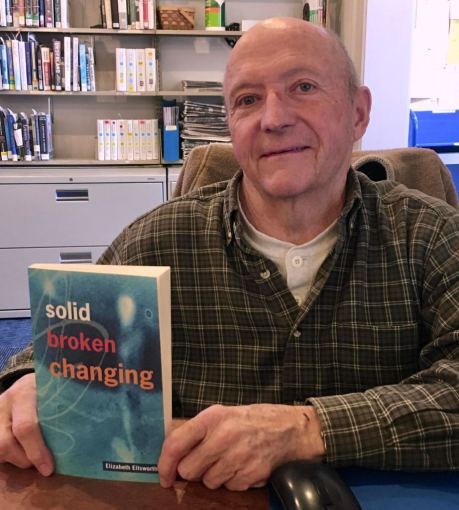
I’m thrilled to report that Tom, one the hero-of-the-planet librarians and cataloguer at the Provincetown MA public library, is at this moment cataloguing and shelving copies ofSolid, Broken, Changingin the Young Adult and Cape Cod Collections!
Tom and the Ptown library were indispensable to the writing of the book. They gave me a great YA collection to research and access to millions of books from universities and public libraries through the MA Commonwealth Catalogue. Plus, those evening screenings of classic and offbeat movies made for perfect breaks from editing.
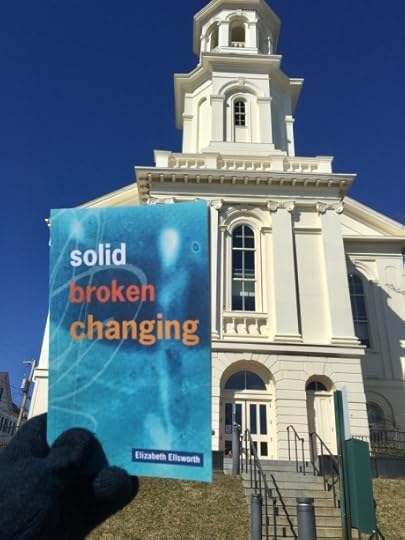
It couldn’t have been a more perfect day to drop off the copies.
Provincetown has one of the best public libraries in the nation at a time when we need them more than ever. It’s a center of the community with free year-round public programming is a lifeblood of the town.
I’m beyond honored to have the book on…
View original post 7 more words
Writing Solid, Broken, Changing
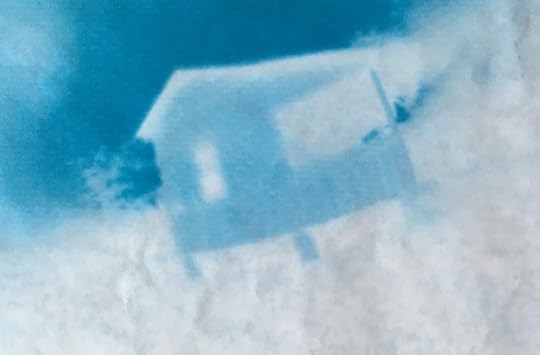 photo by smudge studio,fromConveyance
photo by smudge studio,fromConveyanceI was inspired to write Solid, Broken, Changing by 15 years of collaborative art-making with Jamie Kruse, as smudge studio.
When I first started writing the book, I saw it as a way to give voice to smudge’s lived experiences of field-researching and responding to the Anthropocene as artists. The book was in rough outline form seven years ago, when journalists first began to explain the word “Anthropocene” to their readers. Anthropocene events ramified. And as they did, the book project felt more urgent and relevant. I was editing its print proof when Greta Thunberg crossed the Atlantic and as the 2019-20 fires raged in Australia. And now,Solid, Broken, Changingfeels less like a fiction and more like an artifact of the contemporary moment.
Staging a story about living the Anthropocene on the threshold of adulthood felt appropriate. It’s a time when self…
View original post 209 more words
What readers are saying
☆☆☆☆☆☆☆☆☆☆5 out of 5 stars.
Compelling And Prescient Read
Amazing that this book was written BEC (Before Everything Changed) — for us all! The story offers prescient inspiration and wisdom relevant to all humans (young and old) attempting to live creatively, and responsively, during a time of great social and environmental change...
Review Contains Spoilers:
No
# Tags:
Action Packed,
Life Changing,
Inspirational,ddsf
High School,
Family,
Strong Female Protagonist,
Coming of Age,
Couldn't Put It Down
✔ Yes,
I recommend this product.
Lelia, teen reader
I am both an avid reader and environmentalist, and I have long been searching for a book that truly explores the plights of living in this time of global warming...
I really identified with the thoughts and struggles of the characters, especially those of your main character, Kally. Her thought process and transformation over the plot of the book reflects what I think many people around the world are feeling in this day and age...
I also appreciated how everyone supported each other in your story, which shows that we can all depend on one another in times of crisis. That theme is also reflected right now with whole communities supporting one another during this pandemic.
This was a good read, and I think others would love reading it as well.
M.A.S., a reader in the Bronx, New York
Climate change is a big anxiety trigger for me, but I felt like I was able to somehow absorb the super harsh realities of what the characters (and we) are facing... I was totally transported. The mixture of anxiety, excitement and adventure was really gripping. And even though it is so intense, there is so much hope and positivity...
I just wanted to tell you how much I enjoyed it. And how much I needed it! I seriously didn't put it down. I hope there is a sequel coming.
5.0 out of 5 stars This is a compelling work of art for our moment. Rather than turn away from the challenges of living in the anthropocene (how could they), the characters move with incoming force fields to create new, responsive paths. Such attuned, inventive maneuvers will be increasingly vital as we all "way find" trajectories in our totally new, unpredictable ecology.
<JK, a reader in Illinois
5.0 out of 5 stars A book for all who care about our planet earth and the changes that may already be underway. We begin BEC (before everything changed). A story of what’s possibly on the way for our planet earth and all who make it home. Capturing the fragile moments of adapting to a changing world we are taken along on this unbelievably believable new normal of a solid, broken and changing life in the Anthropocene.

